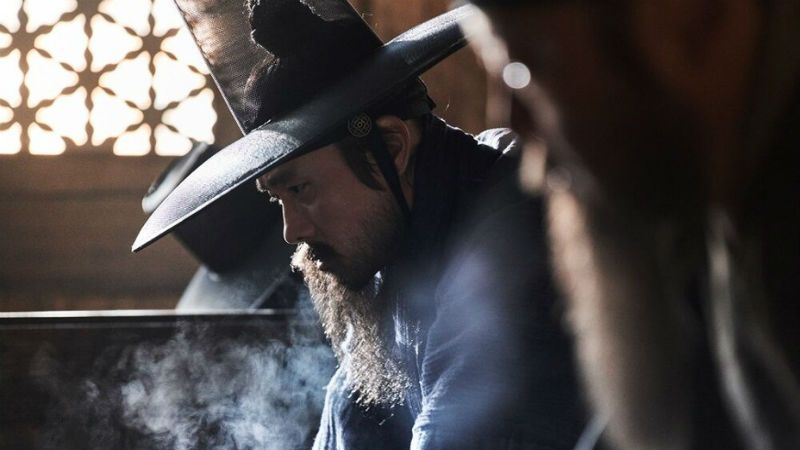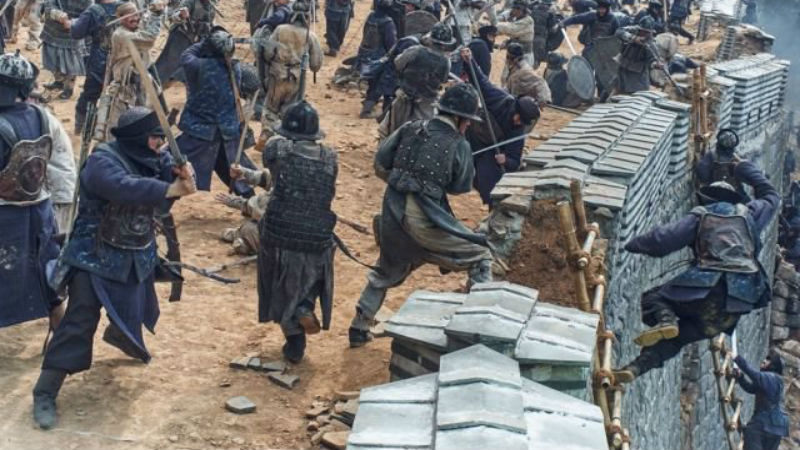The late Ryuichi Sakamoto is a musical icon of the highest order. He is a master craftsman of his unique brand of music; a hybrid genre with classical undertones and electronic magnetism that began in the 1970s and resulted in an incredible 40-year-long career. Attempting to capture the essence of Sakamoto’s career in words would be a disservice to the man’s status. However, before the great musician died of cancer in March 2023, he gifted us something for one last time, in the form of a concert film, documenting Sakamoto’s final performance Sakamoto. To call Ryuichi Sakamoto: Opus a mere concert film though would be discourteous because this is a personally curated marathon that showcases all his fabulous work from over the years, while also being directed by the man’s own son, Neo Sora, in one last emotional and personal touch.
It looks like one giant nonstop performance from Sakamoto, but in reality, it was filmed over a week in 2022 in Tokyo. The set-up is composed of a really sharp but minimalist aesthetic with Sakamoto being the centrepiece and letting his music do all the expressionism for him. Sora and his father set up the project as a final swansong while the latter was still in good enough health to be able to perform, but there are moments in the performance that highlight the man’s ailing health offering a stark realisation for what was just around the corner. A master craftsman needs a tool though, and his was in the form of the most gorgeous Yamaha grand piano placed in the middle of the stage. Now, with the scene set – finished by a lamp that illuminates him and this great instrument of his – Sakamoto takes us on a journey through 20 of his most defining pieces of music.
This musical adventure begins simply from the back of Sakamoto as he readies himself for his coup de grâce. The start is so beautifully sombre before it gradually builds and builds to different levels and down various paths like an adventure should. It becomes a voyage of musical magnificence; the classical sound that echoes throughout is a genre that should be enjoyed by everyone at a specific moment in their life. The choice to engulf the film in a mist of black and white only adds to the special aesthetic and marries ever so well with the overriding bleakness that bubbles from beneath the performance.
Through the direction of Sora and the skill of the film’s cinematographer Bill Kirstein, each camera angle was specifically chosen to emphasise Sakamoto’s swansong – although, it’s not something that needs assistance. Every camera angle is special; it’s an interesting menagerie that showcases another section of the piano, or a different part of Sakamoto’s body that can be seen through the smallest gap from his majestic instrument. Sometimes it might be the reflection of his face shown through the piano’s shining black wood, but it’s clear to see that the aim was for the camera to become a fly on the wall so it could highlight how in tandem Sakamoto is with his partner of more than 40 years.
For all of Opus’s breathtaking qualities, and there is an awful lot of them, we cannot forget the dark undertone that hides beneath the film’s great majesty. You will often notice during the film’s proceedings that there are a lot of breaks, whether it’s the vision of an empty chair or Sakamoto slowly taking a long breath. It’s a metaphor for the man’s mortality; the struggle to maintain his long-standing professionalism and the losing battle with his health – it is very gentle, however, and never too harsh of an experience, even during the moment in which he cries out for a break, as fatigue quickly settling in.
What do we know Sakamoto for overall though? For some, it might be his eclectic film scores that have graced iconic pictures over the years. His Oscar win for the creation of a breathtaking score in Bernardo Bertolucci’s The Last Emperor (1988) was a defining moment, as well as another Golden Globe win for Bertolucci’s next film, The Sheltering Sky (1990). In more recent years, Sakamoto’s work in creating the otherworldly musical composition that shrouded Alejandro G. Iñárritu’s The Revenant (2015) brought him back into the minds of film fans worldwide as well. But he was first thrust into the film world for his work on Oshima’s Merry Christmas, Mr. Lawrence (1983; he also played one of the leading roles), which produced his pièce de resistance, his magnum opus if you will, the song of the same name created for that film that left a long-standing impression on the world.
It seems fitting actually, that the final song that plays him out in Opus is that very same astonishing piece of music which successfully delivers the perfect climax to the film. It was laid out at the beginning but it’s something that needs to be reiterated for a full understanding: Ryuichi Sakamoto | Opus is more than a concert film, it’s one that not only explores the music of a legendary figure but also celebrates the life of a man who was at the pinnacle of his work ,and an artist who inspired countless more (genres too) over the years. These kinds of films are not for everyone; they can be a slog, but if you appreciate the arts and respect talent when you see or hear it, then you need to make this a film for you, so you can celebrate the great Ryuichi Sakamoto and the magnificent legacy he has left behind.
Ryuichi Sakamoto: Opus is in cinemas across the UK on Friday, March 29th. On BFI Player on Friday, May 3rd.










